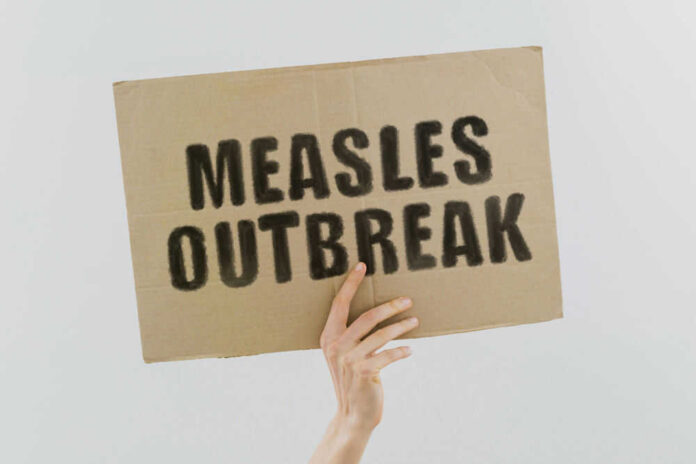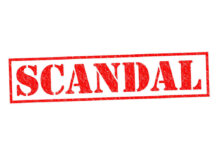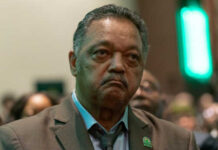
America’s largest measles outbreak in a decade is exploding along the Utah-Arizona border, exposing the fault lines of modern public health—and the consequences are reverberating from rural church pews to CDC headquarters.
Story Snapshot
- Hundreds of measles cases and several deaths were reported in 2025, with southwestern Utah and Arizona at the epicenter.
- Unvaccinated communities, especially Mennonite groups, are heavily impacted as the virus crosses state and national borders.
- Public health officials deploy urgent vaccination drives and wastewater surveillance to track the elusive spread.
- Persistent vaccine hesitancy and misinformation pose a significant threat to undermining herd immunity and future outbreak control.
Outbreak Epicenter: Where Faith, Borders, and Viruses Collide
In 2025, the U.S. is confronting a measles crisis not seen in a decade, as the disease leaps from community to community across the arid expanse of southwestern Utah and northern Arizona.
The flashpoint: rural towns and insular Mennonite enclaves where vaccine skepticism is the norm and family ties span both state and international lines. These communities, stitched together by shared beliefs and borderless kinship, have become unwitting conduits for a virus that respects no boundaries.
The outbreak’s path—beginning with a traveler in Texas and radiating outward as far as Chihuahua, Mexico—has forced both state and federal agencies into a relentless game of catch-up.
Public health officials aren’t just fighting a disease; they’re fighting a set of beliefs. Local resistance to vaccination has proven as formidable as the virus itself, with church elders and family patriarchs holding sway over health decisions.
When the Utah Department of Health and Human Services issued exposure alerts in May and June, the message was clear: the virus was moving faster than the bureaucracy, and every day lost meant another cluster of cases in schools, churches, and grocery stores.
Declining Vaccination Rates: A Preventable Tragedy
Measles was supposed to be a disease of the past, declared eliminated in the U.S. in 2000 thanks to the MMR vaccine’s success. Yet, the 2025 outbreak has made painfully clear that progress is fragile. National MMR coverage has slipped below the threshold needed for herd immunity, with rural and religious communities leading the decline. Experts trace the crisis to Ontario, Canada, where unvaccinated individuals sparked a chain reaction that quickly reached the American Southwest. The numbers are stark: by September 2025, the CDC confirmed 1,491 U.S. cases—86% linked to this outbreak—with three deaths, all among unvaccinated people.
Wastewater surveillance—an innovation born of the COVID-19 era—has become a grim barometer of hidden spread. In Utah, scientists detected measles in sewage before cases appeared in clinics, a warning that the reported numbers may be only the tip of the iceberg. The implications are sobering: immunocompromised residents, infants too young to vaccinate, and even vaccinated individuals with waning immunity are all at risk when community protection falters.
Public Health Response: Chasing an Outbreak on the Move
The response has been swift but faces daunting obstacles. State and local health departments have launched emergency vaccination clinics, dispatched teams to trace exposures, and broadcast urgent pleas for immunization. Yet, hesitancy and misinformation—fueled by social media echo chambers and deep-seated distrust of government—persistently undermine these efforts. Cross-border travel complicates containment, as families move freely between Utah, Arizona, and Mexico, carrying the virus with them. The CDC, meanwhile, has deployed experts and resources, but acknowledges that without community buy-in, the outbreak may linger or worsen.
Healthcare providers on the front lines describe a return to medical scenes most believed consigned to history: feverish children in isolation, parents desperate for answers, and the ripple of anxiety through towns where every cough is suspect. For some, the outbreak has been a wake-up call—prompting late vaccinations and hard conversations about communal responsibility. For others, it has hardened opposition, leading to tense standoffs between public health officials and skeptical local leaders.
The Stakes: Erosion of Trust, Rising Costs, and a Fractured Consensus
The fallout extends beyond health statistics. Hospitals in affected areas report strained resources and staff burnout as they juggle measles cases alongside routine care. Schools and public events face intermittent closures, disrupting families and local economies. At the policy level, debates over vaccine mandates and personal exemptions have reignited, with lawmakers caught between public health imperatives and vocal constituencies demanding autonomy.
Experts warn that the longer-term risk is the normalization of outbreaks once considered unthinkable in modern America. If vaccine coverage remains low, measles—and other preventable diseases—could regain a foothold. The CDC’s data-driven warnings are blunt: continued decline in immunization rates will erode herd immunity, leaving the most vulnerable at risk and the nation’s hard-won disease-free status in jeopardy.
Sources:
Utah Department of Health and Human Services
Wikipedia: 2025 Southwest United States measles outbreak
CDC: Measles Data and Research















